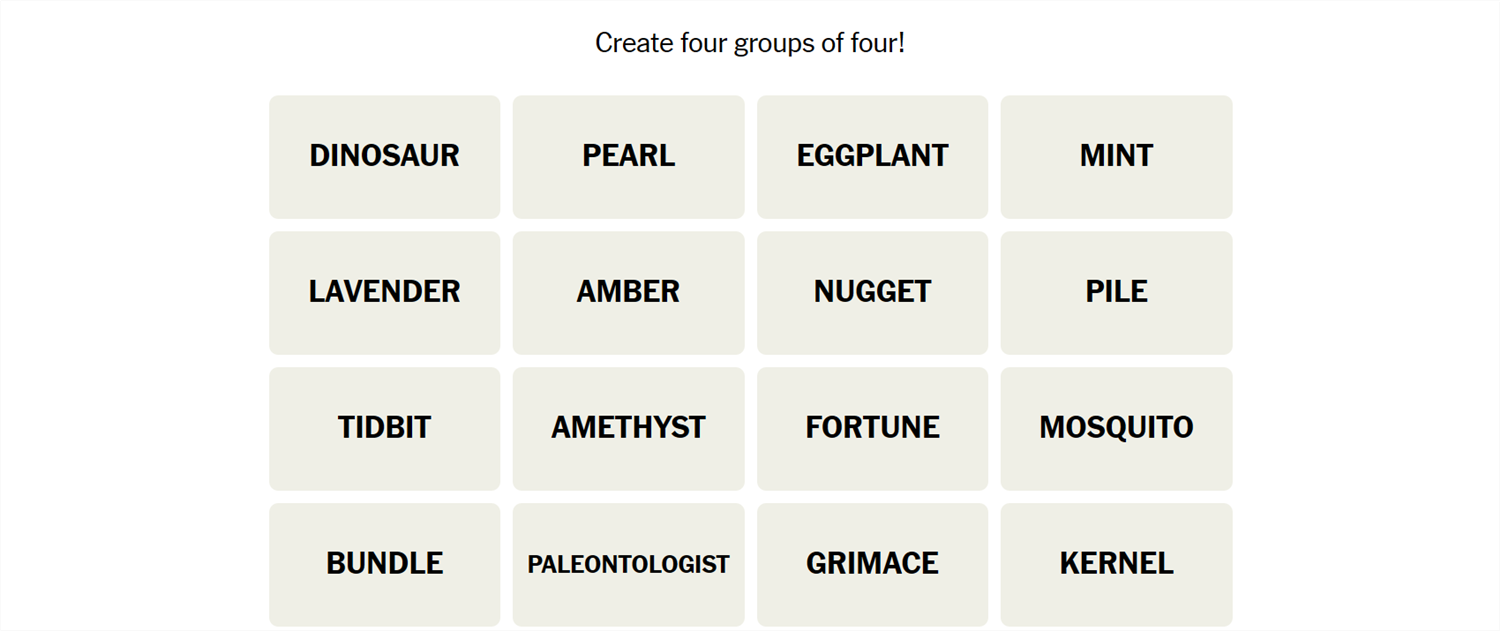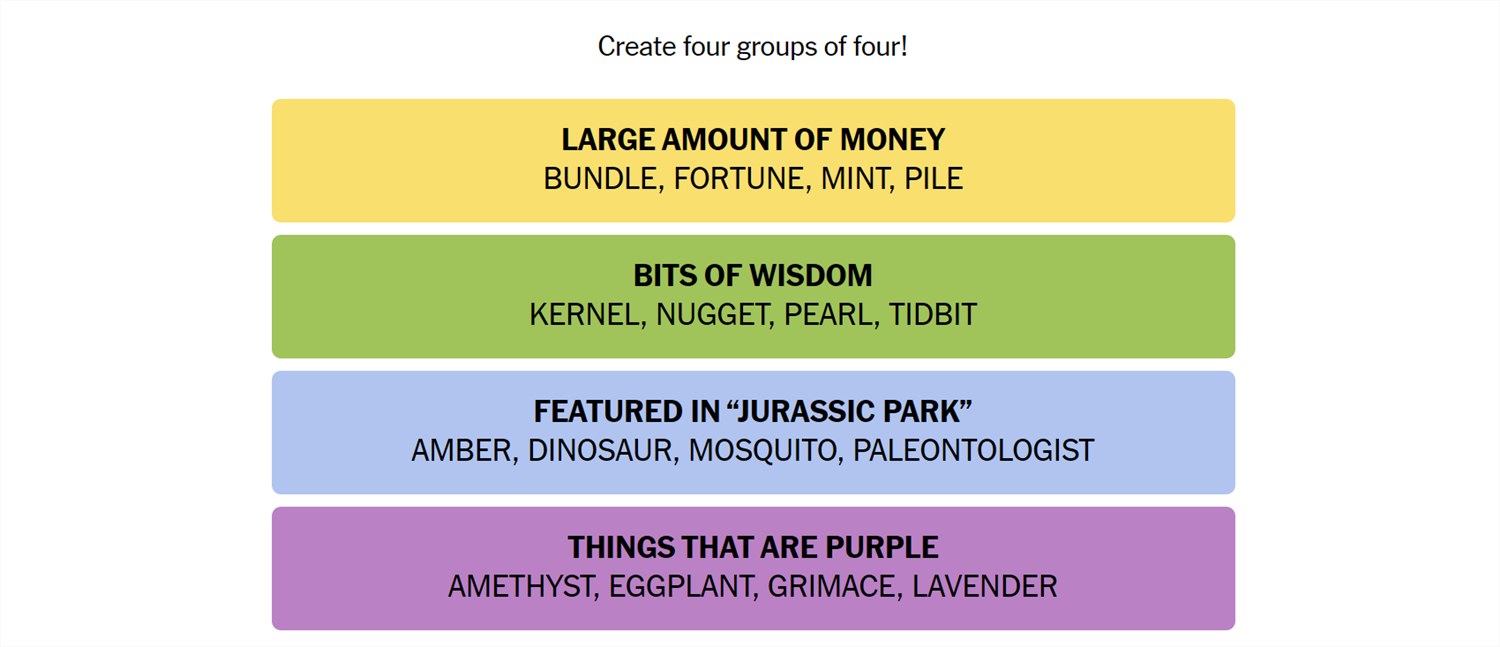Connections is a game from the New York Times that challenges you to find the association between words. It sounds easy, but it isn’t—Connections categories can be almost anything, and they’re usually quite specific. If you need a hand getting the answers, we’ve got you covered.
What Is Connections?
Connections is a game from the New York Times. The objective is simple: sort 16 words into groups of 4. Each group of words will be connected by some common idea or theme. That common element could be anything. We have seen everything from games that rely on the number of letters in the words to categories that require you to spot an extra letter at the end of the word. Sometimes they’re references to economics, other times they reference fairy tales. There is no telling what sort of association there will be between words.
Once you’re confident you understand the connection, select 4 words, then hit “Submit.” You have only four attempts in total, so don’t be too guess-happy.
Hints for Today’s Connections Groups
Here are a few hints for the 458th Connections game to get you started:
- Yellow: When you’re loaded with cash.
- Green: Wise words.
- Blue: An extremely popular movie from the 1990s.
- Purple: Red and blue.
If you still need help, the actual group names are:
- Yellow: Large Amount of Money
- Green: Bits of Wisdom
- Blue: Featured in Jurassic Park
- Purple: Things That Are Purple
Today’s NYT Connections Answers
Large Amount of Money (Yellow):
Bundle, Fortune, Mint, Pile
Bits of Wisdom (Green):
Kernel, Nugget, Pearl, Tidbit
Featured in Jurassic Park (Blue):
Amber, Dinosaur, Mosquito, Palentologist
Things That Are Purple (Purple):
Amethyst, Eggplant, Grimace, Lavender
How Did We Solve This Connections Game?
The 458th game would have been impossible for me if I’d had to actually guess each group, Purple, specifically was difficult.
Kernel, Nugget, Pearl, and Tidbit made me think of “small amounts of a thing,” so I put them in a group. I was a bit off the mark, Green was actually “Bits of Wisdom,” but I guess I got close enough.
Amber, dinosaur, mosquito, and paleontologist all made me think about prehistoric times. I didn’t really know what the connection between words might be, but they seemed likely to be together. Blue was “Featured in Jurassic Park.”
Fortune made me think of money, and from there, I started looking for other related words. I can see a “bundle” of cash, a “pile” of hoarded gold, and a mint is where one produces money. Those words were in the Yellow group, “Large Amount of Money.”
That left amethyst, eggplant, grimace, and lavender in the Purple group. I immediately noticed that amethyst, eggplant, and lavender are all Purple, but I could not figure out how grimace might be related. It turns out that Grimace is a character that is friends with Ronald McDonald, and he is purple. I might be the only person that missed this.
The Purple group was “Things That Are Purple.”
How Do You Guess Connections Groups?
There is no quick, reliable way to approach Connections like there is with Wordle, since Connections isn’t algorithmic. However, there are a few things to keep in mind that can help.
- Look for similar parts of speech. Are some words verbs and others nouns? Are some adjectives? Try mentally grouping them based on those categories and see if any other patterns jump out at you.
- Are the words synonyms? Sometimes categories will just be synonyms for a phrase, or very close to synonyms. Don’t rely too closely on this, though. Occasionally, Connections will deliberately throw in words that are sometimes synonyms to mislead you.
- Try saying the words. Sometimes, saying the words helps. One puzzle we saw included the words go, rate, faster, clip, pace, speed, move, commute, and hurry—all of which are obviously related to the idea of motion. However, when you say them, it becomes a little more obvious that only four (go, move, hurry, faster) are things you’d actually say to prompt someone to get moving.
- Expect the red herring. Connections usually has words that could be plausibly, yet incorrectly, grouped together. Take the words Bud, Corona, and Light, as an example. You might instinctively see those three words together and assume they’re lumped together in a category related to beer—but they weren’t.
- Look for distinct words. If a word on your board doesn’t have multiple meanings or can really only be used in one context, try using that word as the basis for a category.
- Shuffle the board. Sometimes, moving words around will help you look at them in new ways.
If you didn’t solve this one, don’t feel too bad—there’s always tomorrow! And those words may align with a topic you’re interested in, giving you a leg up on the competition.






